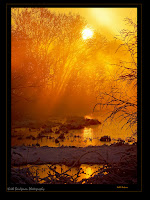This image became a good example of what I mean when I explain to novice photographers 'never settle for the ordinary'. Often they become fixated on the object thinking that the object by itself is what creates the great image. Too often they neglect to think in terms of photographing light. There is a difference between ordinary, pretty good, and extraordinary, and as photographers we should always pursue the extraordinary.
 |
| Ordinary |
Ordinary, when it comes to nature photography, tends to have that fundamental look about it. It may very well be a good technical image and capture the basic appearance of the object, but, more often than not it looks like something that would be used in a Text Book, a documentary image of sorts, where the light falls upon the image.
 |
| Pretty Good |
Pretty Good is a step in the right direction where light has been used to enhance the basic beauty of the object. It certainly provides a more interesting viewpoint, but there is more available to capture. As a photographer, if I stopped at Pretty Good, I would have left myself short realizing that anyone, even a novice can capture Pretty Good. There is always another look, another example, another opportunity to use light in an artistic manner, and that is what we seek to discover.
 |
| Extraordinary |
To capture the Extraordinary, one must look well beyond the obvious and visualize the potential of what is there. Even simple objects in ordinary circumstances can become extraordinary images with a bit of creative vision. One must also understand how the camera captures light, knowing why that white field of snow looks gray in your image, or why that deep blue sky looks pale and washed out. This idea takes you deeper, it stretches your thought process broader into the realm of becoming an artist, someone who has a command of the tools they use, someone with a vision vs simply being a photographer of things. It takes practice and a willingness to try something new, something different. It may require you to learn more about how your camera actually does what it does and why it does so, instead of just accepting what the out of box configuration gives you.
Same flower, three perspectives. The difference between Ordinary, Pretty Good, and Extraordinary is often just a few inches away, a different angle of light, another perspective, or coming back a second or third time to discover the right combination of light, object, and circumstance. What you will find is that even though Extraordinary seems hard and difficult to master, the potential for doing so is endless.






